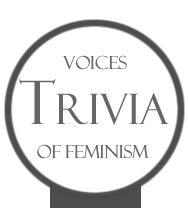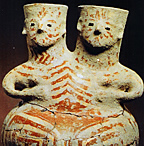Woman-Woman Bonds in Prehistory
Gabriele Meixner
translated by Lise Weil *
Bonds between women are as old as human history itself. This assertion, as banal as it seems, is by no means self-evident. Against the background of a male-centered history of interpretation, it can sound like a declaration of war. The statement of genetic theorist Wilhelm Johannsen— “The basis of life continues to be hunting, firemaking, and sex with women by the fire” 1 — is typical of the prevailing view. A lesbian-feminist critique of such a model—in which women are seen as naturally ordained for men—does not yet exist. Moreover, the question of what sort of relations between women could have existed at the beginning of civilization has not yet been a subject of research. This article will provide an initial point of reference.
Clues about the daily reality and world-view of early societies can best be drawn from the artistic legacy dating from the Ice Age: images of animals of the time, symbols of vulvas and above all depictions of women—which are far more numerous throughout prehistory than those of men. The interpretation of these material, so-called “silent” witnesses, is possible only indirectly, as there are no written sources. It requires interdisciplinary work, which tends to be rather unsystematic. Examples from ethnography, folklore and primatology are often invoked arbitrarily. Androcentric and heterocentric projections are a main source of error in the reconstruction of prehistoric societies. But no interpretation can be more than speculative. One way to stay as close as possible to the findings is to group the artistic documents according to their motifs and to situate them within the field as a whole. An examination of long stages of development in art reveals that some formal conventions and some subjects remain the same over thousands of years. Noticing which subjects were depicted and which were not permits an initial stocktaking.
I shall investigate how women are placed in relation to one another in the motifs of prehistoric art and then ask whether the archaeological material allows us to draw conclusions about what has made these bonds between women possible and which major cultural developments can be traced back to them. I have named this approach “the archaeology of woman-woman bonds.” The object of the investigation will be documents from various phases of prehistoric art: Paleolithic female statuettes and dancing scenes as well as figurines of female couples from the Neolithic and Bronze Age. Such an approach across eras and cultures is certainly open to attack. Its justification lies in its aim to lay the first tracks in an assault on the global beliefs of patriarchal ideology. On the basis of the material shown here it is doubtful that the woman-man couple is a transhistorical, anthropological constant and the nucleus of human group formation. Also to be challenged is the reflexive thinking that with alarming insistence reads heterosexual mating practices into the pictorial material. Analysis of the early symbolic order suggests rather that woman-woman bonds were an essential contribution to the development of communities and culture and that the female couple was a symbol for early world philosophies.
Woman Image as World Image
The earliest human images in art history are depictions of women. They have been found since the Upper Paleolithic Age, and appear frequently in the Gravettian period (25,000-18,000 BC). While depictions of men from that cultural epoch are extremely rare, about 400 female statuettes have been excavated from all over Europe. Figurines like the famous Venus of Willendorf (Austria) (fig.1) have for example been found in Lespugue (Southwestern France), Dolni Vestonice (Moravia) and Kostienki (Ukraine). They are constructed of ball-shaped elements and follow an extraordinarily uniform design.
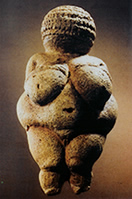
Figure 1. Venus of Willendorf. Limestone, height 11 cm. Austria, 24,000 BC.
Marie Konig, the German researcher of prehistory, believes that the female figurines expressed prototypes, universal concepts. She regards their formal principles as in line with the development of abstract symbols reaching back to the history of evolution, where the earliest ideas about time and space were recorded.
“The female statuettes presuppose orientation in temporal and spatial existence. They illustrate the curve of the world with navel as midpoint and vulva as symbol of rebirth. . .thus woman stood in the center of the cult; her image was worshipped. 2
Belief in rebirth is not to be confused with belief in fertility magic. The numerous Ice Age depictions of vulvas are to be interpreted not primarily as an expression of female fertility in the service of the reproduction of the species, but rather as a sign of origin, a symbol of remembered history in the sense of a female genealogy. Stylized female figures were the meaning-bearers of the Paleolithic world. For actual women this meant that they were represented in the symbol system; women were the sex made visible.
What life experiences of the Paleolithic ancestresses could have called forth this symbolism? An example might give us a clue. In many early Paleolithic artifacts the depictions of women are linked with lunar symbolism. From Laussel in the Dordogne comes the relief of a woman who carries in one hand a crescent-shaped horn engraved with thirteen notches—symbolizing the thirteen moon months of a solar year. Her other hand is pointing towards her lap, emphasizing the connection with the female cycle. (fig. 2) Presumably, women had observed correspondences between lunar and menstrual cycles and exchanged these experiences with one another. This early empirical knowledge was the precondition for the creation of the first calendars which related human to cosmic time. It is imaginable that communal life organized itself around the rhythms of the female cycles. Thus menstrual cycles have to be seen not only in their biological generative aspect but also in terms of cultural formation. Judith Schlehe has pointed out how important the symbolic meaning of menstruation is for a cultural autonomy of female corporality, for the idea “of a female body that is not only used by men and derives its meaning from relationship to men, but which has a direct meaning for women themselves. . . as well as for the community of women, where common bodily experience make possible specific forms of relationship." 3
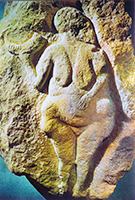
Figure 2. Woman with Moonshaped Horn. Limestone relief, height 44 cm.
Laussel/Dordogne, France, 25,000 BC.
In the history of conventional interpretations of the Paleolithic female statuettes, various strategies were used to suppress the thought that women themselves might have access to or make use of symbols. Women were to be symbols for men. In his standard work Prehistoric Art, Andre Leroi-Gourhan describes the female statuettes as follows: “In 1896 when the first depictions of prehistoric man, or at least of his wife, were discovered, they aroused great attention.” After the insolence of grammatically allotting object status to women, Leroi-Gourhan goes on to posit the marital dyad as the basic form of Ice Age communities, an assumption that is not supported by any archeological evidence. Ignoring the absence of male depictions, he simply tacks them on. “It is . . .probable that at least partly the statuettes were depicting couples. 4 The list of such projections could be prolonged ad nauseam, but it’s worth mentioning that Hans Peter Duerr, chair holder at the Reform University of Bremen, was reminded by the female figurines of “the leather mask woman of contemporary pornography. 5
The interpretations of a limestone relief from Laussel, Dordogne supply a prime example of heterocentric thinking. (fig. 3) Two female bodies are shown opposed as on a playing card and seem to hold each other by the hands. The upper figure has more definition: we can make out the head and breasts, the arms along the body, the thighs being pulled upward. The lower figure is less clear; the head and shoulders are only outlined, and her lower body seems to disappear beneath that of the upper figure. Even if the lower figure is only suggested, her proportions are fashioned according to criteria that are customary for depictions of women in the Gravettian period, so that we can be certain these are two female bodies. Nonetheless, many researchers interpret this scene as an act of heterosexual intercourse. Max Raphael sees it as “the depiction of a rite in which women had to follow the man into death in order to serve the sex act, which was supposed to lead to the man’s rebirth. ... [T]he woman is carved more vigorously and is positioned above the man, all of which can be explained by the fact that this is intercourse with a dead person, in which it was inevitable that the woman be situated above the man." 6
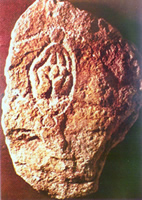
Figure 3. Female double relief. Limestone, height 23 cm.
Laussel/Dordogne, 25.000 BC
Archaeologist Rudolf Feustel offers the choice of two coitus positions. “Either a man [is lying] on his back and a woman is squatting on him, or the woman is on her back while the man kneels before her and pulls her legs to him.” As evidence Feustel cites the sexual practices of “primitive peoples” like “Australians” and “Melanesians.” 7 Weary of these compulsive heterocentric interpretations and wishing to point out that even in the Stone Age sexual relations between women were not out of the question, I described the Laussel relief elsewhere as “a depiction of two women embracing each other as in a love act. 8 The archaeologist Marija Gimbutas interprets the relief as an earliest instance of the image of the double goddess which would become common in the Neolithic Age. 9 Basically I agree with Gimbutas. I too think of it less as a portrayal of a real scene from the lives of Ice Age women than as a symbolic depiction of the double figure, though I don’t believe the concept of goddesses had developed yet in the gatherer-hunter groups of the Paleolithic Age. It’s possible that what is being expressed here is a concept of the world in which two female forces bring about the cohesion of the visible and invisible world, as in the succession of day and night, life and death.
Womandances
Relations between women are frequently depicted in the Upper Paleolithic phase of the Magdalenien (11,000-9,000 BC). These are the earliest documents of group formations, as seen in women’s dancing scenes. In the Magdalenien, the image of women becomes much more stylized. They’re shown in profile, with upper body and legs only hinted at, and the head missing. Sometimes breasts and arms are portrayed. The emphasis is on the pushed-back bottom, so that the depictions evoke a dance posture. Unlike the static female statuettes of the Gravettian which describe higher beings or philosophical symbols, the mobile nature of these figures, especially when in groups, suggests an account of scenes from daily life. But the very schematic form also resembles a pictogram, a cipher for “woman.” Such “womansigns” were spread all over Europe in a very similar, thus canonized form. They have been found as statuettes or engravings in more than twenty excavation sites from the foothills of the Pyrenees to the Ukraine. Often several statuettes or numerous carvings are found in one settlement. For example, fifteen figurines made of gagate as well as scenic depictions carved into bone were excavated in Petersfels (Konstanz, Germany). Two limestone plates came to light from La Roche de Lalinde (Dordogne, France), both carved with several women figures following or facing each other. 10
The greatest find was excavated at Gonnersdorf near Koblenz. Near thirteen statuettes more than four hundred carvings of women figures on slate plates were recovered. This number seems enormous considering that not more than twenty persons could have lived in that settlement. On the Gonnersdorfer plates, ten percent of the women are depicted in pairs. These small drawings have a powerful sensual effect: the dancing pair meet with erotic gestures, they turn toward one other, some embrace, or their breasts or knees touch, other women dance side-by-side or in a row. 11 The first couples depicted in the human history of art were female couples. (fig. 4)

Figure 4. Two female dancers. Carving in slate, figures 10.2 cm. high.
Gonnersdorf/Rhine, Germany, 10,500 BC.
Bigger dance scenes were also carved in Gonnersdorf. A group of sixteen dancers has been deciphered on one plate. An even bigger group of women was found on a piece of bone from Petersfels: more than eighty abstract dance figures lined up in two long rows. As there were surely not that many women living in the Petersfels cave, it’s more likely this was a meeting of women from neighboring settlements.
Women’s dances may thus have been essential for the contact and cohesiveness of regional groups. Women formed the core of these meetings; it was they who decided when and how often to hold them. Possibly initiation rites were the occasion, but certain seasonal events must have also played a role. The widespread occurrence of the figure of the “female dancer,” which had become a universal expression, suggests that women’s dances were extremely important in the Ice Age. Dances are ritualized encounters. The common rhythmic movement integrates the individual into a general process and creates close ties between the individual and the group, or, as the one-on-one encounters suggest, between individual women. The anthropologist Mary Douglas writes: “Only because people lived in groups and felt unified with their group were they able to imagine other beings and things combined into groups. At the center of the original image of nature stands society, not the individual. 12
Fundamental to cognition of the world is the perception of belonging to the group of humans, and this perception—inferring from the symbolic order and the Paleolithic reality—constituted itself in the group of women.
In current scientific discourse, there is no mention of the possible creative achievements of the women depicted in these scenes. Instead there is speculation that men, if they weren’t depicted, were at least the creators and owners of the female figures. “These images of women were carved by men. . . after an emotional argument. Of course there are no objective arguments against their having been also—or only—produced by women.” Regarding the statuettes, this same author “likes to think of them as the personal possession of individual men, even if concrete grounds for this supposition do not yet exist.” 13 Also common is the idea that women’s dances served to animate men’s sexuality. Analogies from primate societies are called in to support such claims. “Considering the position of the female ape during copulation, the little figures from Petersfels, Gonnersdorf, etc, express a priori a readiness for coitus.” 14 Just to underline the nonsense of such arguments, a lesbian researcher feels compelled to point out that lesbian practices among female apes are quite common. I believe that the dances definitely contributed to an eroticisation of daily encounters between women and to a strong feeling of solidarity within the community of women.
Woman Couples
In settlements from the Neolithic and Copper Stone Age in Southeast Europe and Anatolia (6,000-2,500 BC), ten thousand small humanlike sculptures have come to light; of these, only three to five percent are male images. The archaeologist Marija Gimbutas has documented these findings in publications rich in material giving access to further interpretations. 15 Against the background of this overwhelming majority of female figurines, which Gimbutas interprets as various aspects of the goddess, a large number of figures of female couples also appear. Goddess or female couples are part of the basic concept of Neolithic art, continuing on into the Bronze Age (2,500-1,000 BC). Images of mixed couples are extremely rare in the Neolithic. Male couples don’t appear at all. The woman-woman bond and the doubling of female power became a symbol for early beliefs: two divine beings thought of as female seemed to guide human destiny. We can assume that this worldview expressed itself in cult-life and everyday life directed by women. The equipment of Neolithic temples and temple models suggests an exclusively female priesthood.
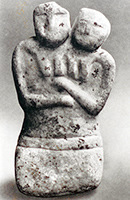
Figure 5. Female couple. Marble, height 16.4 cm.
Catal Huyuk/Anatolia, Turkey, 5,800 BC.
Over thousands of years, women figures appearing together were created with uniform features, and most of them are indistinguishable. Some emerge from a common lower body, which could mean the merging of two figures or the doubling of one. Moreover the bond between them is emphasized by touching. A marble figure from Catal Huyuk (Anatolia) shows two women side-by-side (fig. 5). They are the same size and the same form. The one on the left has put her arm below the breasts of the woman beside her. She in turn touches the other woman’s arms. The lower body of both figures appears fused and is circled by a belt. Double figures of clay have been found in Romania and the Serbian Vinca culture, some with entirely fused bodies, with two separate heads. In a twin vessel from the Anatolian Hacilar culture (sixth millennium BC) now on exhibit at the Abegg Foundation in Bern, two separate female upper bodies emerge from a common belly. (fig. 6.)
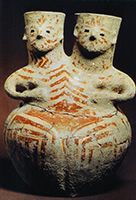
Figure 6.
Female twin vessel. Clay, height 32 cm.
Hacilar culture/ Anatolia, Turkey, 6th millenium BC.
What could have been the meaning of these female dualities in the context of the first Neolithic societies to settle and grow food? The communal activities of the early agricultural societies followed the seasonal periods of the growing process. The time for sowing and harvesting had to be exact. Scientists unanimously agree that women were in charge of the cultivation of plants. It is possible that the Neolithic people thought of the sequences of vegetation cycles as directed by two divine female beings. The fusing of these goddesses into one figure is perhaps an expression of the ever recurring sequence of summer and winter. Many vegetation goddess dualities appear in later mythography. Probably the female double figures had further meanings. In Catal Huyuk, situated at the sanctuary walls, there are three monumental plaster reliefs of two women appearing side by side. Their arms and legs are wide open and face skywards. 16 The unearthly appearance of these figures recalls the cosmic primeval sisters of later creation myths (e.g. the “sistermothers” of the Hopi who created earth and life on earth 17 ). The double figures could also have been rulers of the world above and the world below, like Inanna and Ereshkigal, the divine sisters of Sumerian mythology.
For thousands of years, female genealogy in the mother-daughter line determined the human concept of history. It was symbolically expressed in double figures where one is considerably smaller than the other. These first appear in the Neolithic and were identified repeatedly in the early Bronze Age. Six marble double idols were found on the Cycladic Islands (in Greece around 2,500 BC); in these idols, the female figure carries on her head a very similar but much smaller figure. (fig. 7)
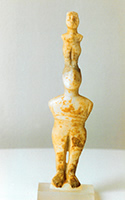
Figure 7. Female double figure. Marble, height 21.6 cm.
Paros/Cyclades, Greece, 2,500 BC.
Such “headbirths” could have illustrated the perceived line of succession from mother to daughter. Another form of descent in the female line is represented in an alabaster idol from Kultepe, Anatolia (around 2,000 BC). A disc-shaped idol, marked as female by a big pubic triangle, carries on her belly a smaller, equally shaped but double-headed little figure that seems to emerge from her lap. Alongside the geneaological aspect, this speaks to multiplication, a “family tree” branching out along the female line. 18
It is hard to say whether the twin figures represented goddesses or real women. Heavily stylized ones, like the two-headed figures, stand for an idea; the more natural ones could however represent real women whose connections seemed especially meaningful: mother and daughter, sisters, priestesses who together oversaw the cult of the twin goddesses, double queens, handed down from the Amazon myths, or simply lovers.
Marija Gimbutas, who has pointed out how widespread the female double figures were, assumes they were goddesses. Like all the other researchers, she remains silent about possible relationships between the women. Not so when the image is of a mixed couple. The only such example comes from the Romanian Gumelnita culture (end of 5th millennium BC) and shows a woman and a man simply standing next to one another. Gimbutas stylizes them to “lovers” and connects them to the ritual of holy marriage. 19 But on the basis of what can be seen in the depiction, this woman-man couple deserves the attribute “lovers” far less than some of the woman couples whose connection is shown in a much more intimate way. In cultures whose members were familiar with pictures of close woman- or goddess-couples, why should women not also have related to each other physically?
It is difficult to draw conclusions about real relations between women in archaic times. Even our vocabulary comes up short; concepts like world-image, cult and everyday life, goddess, art and love can hardly bridge the thousands of years between the Stone Ages and the present. However, when it comes to the possibilities for alliances between women, we can state what distinguishes the societies of then and now. Women’s presence in the symbolic order of prehistoric societies is overpowering. No culture known as patriarchal has so exclusively created images of women, or attached so much value to them. The visual documents and archaeological findings suggest a far-reaching separation of the sexes, expressed for example in the women’s group dances in the Paleolithic. Durable woman-man couples do not seem to have formed the nucleus of communities. The burial customs of Catal Huyuk point to the same conclusion. Women were never buried with men, but rather together with other women and/or children. 20 Such findings suggest life-long and culturally important bonds between women which also found expression in symbolic terms in the many depictions of woman couples.
Notes
* Translation draft by Java Mazurek [back to article]
German original: "Weib-weibliche Bindungen in kulturgeschichtlichen Zeugnissen." In: L'Homme. Zeitschrift für feministische Geschichtswissenschaft. 4. Jg. Heft 1. Wien 1993. Please see the original
article for further references, some of which have been omitted here.
1. Gottfried Benn, Doppelleben, München 1967, p. 95 [back to article]
2. Marie E. P. König: „Die Frau im Kult der Eiszeit“. In: Richard Fester u.a. (Ed.), Weib und Macht. Fünf Millionen Jahre Urgeschichte der Frau. Frankfurt am Main 1987, p. 131 [back to article]
3. Judith Schlehe, Das Blut der fremden Frauen. Menstruation in der anderen und in der eigenen Kultur. Frankfurt a. M. 1982, p. 242 [back to article]
4. André Leroi-Gourhan, Prähistorische Kunst. Freiburg 1975, p. 109 [back to article]
5. Hans Peter Duerr, Sedna. Oder die Liebe zum Leben. Frankfurt a. M. 1984, p. 325 [back to article]
6. Max Raphael, Wiedergeburtsmagie in der Altsteinzeit. Frankfurt a. M. 1978, pp. 23, 25 [back to article]
7. Rudolf Feustel, „Sexuologische Reflexionen über jungpaläolithische Objekte.“ In: Alt-Thüringen 11, 1970/71, p. 34f [back to article]
8. Gabriele Meixner, „Weltbild und Frauenbild in der Altsteinzeit.“ In: Akademie für Lehrerfortbildung. Akademiebericht 164. Dillingen 1990, p. 17 [back to article]
9. Marija Gimbutas, The Language of the Goddess. San Francisco 1989, p. 172 [back to article]
10. Gerhard Bosinski und Gisela Fischer, Die Menschendarstellungen von Gönnersdorf der Ausgrabung von 1968. Frankfurt a. M. 1974, pp. 99 - 113 [back to article]
11. Ibid. Ill. 30, 31, 32, 36 [back to article]
12. Mary Douglas, Natural Symbols: Explorations in Cosmology. London 1973 [back to article]
13. Bosinski, pp. 116, 119 [back to article]
14. Feustel, p. 32 [back to article]
15. Marija Gimbutas, The Goddesses and Gods of old Europe. London 1982 [back to article]
16. James Mellaart, Catal Huyuk: A Neolithic Town in Anatolia. London 1967 [back to article]
17, Merlin Stone, Ancient Mirrors of Womanhood. Boston 1984 [back to article]
18. Ekrem Akurgal, Die Kunst der Hethiter. Munich 1961, ill. 25 [back to article]
19. Gimbutas, 1982, pp. 228f., ill. 243 [back to article]
20. Mellaart, pp. 74ff. [back to article]
All images courtesy of Gabriele Meixner
Working Notes
The first couple depicted in the history of civilization was a female couple. This simple sentence is the result of my more than ten years of research. The initial incentive was the appearance of the exciting Ice Age findings from Gonnersdorf in Germany which became known in the 70s. They showed hundreds of female dancers carved into slate plates and below them many couples facing one another in erotic positions.
My first response was incredulous astonishment. 12,000 years ago images of women were created which appear to correspond to the ones we feminists were just discovering. We danced together in the first women’s festivals, and on the streets of Western European cities, women appeared publicly as lovers. My research thus began with a process of identification.
Once I became aware of the motif of the female couple in these early times, there was a long process of examining documents from pre- and early history. I visited museums, read excavation reports and went through the literature. I was not prepared to find so many images of woman couples, or to be so disappointed by the interpretations suggested in the archeological literature. Often the two women together were not recognized as such, but were seen instead as a mixed-sex couple, typical misinterpretations resulting from patriarchal projections onto prehistorical material.
In this article, which appeared in German in 1993, I subject the current interpretations to a critique of heterocentrism in order to free the reader to see the connections between women that are actually there: dancing couples, goddess dualities, mother-daughter pairs, sisters, priestesses, double queens and lovers.
About the Author
Gabriele Meixner was an editor in the first presses of the German women's movement (Amazonenverlag, Frauenoffensive) and has co-translated works by Monique Wittig (Le corps lesbien, Les Guerilleres, Lesbian Peoples) and Adrienne Rich (The Dream of a Common Language). For more than twenty years she has researched and published on the subject of prehistoric art interpretation from a lesbian-feminist perspective. She is known for her book Frauenpaare in kulturgeschichtlichen Zeugnissen (Female Couples: Historical Evidence) (1995) and the companion exhibition which was shown in more than thirty German cities. She also wrote a biography of prehistory scholar Marie E.P. Konig, Auf der Suche nach dem Anfang der Kultur (In Search of the Beginning of Culture) (1999). Currently she is writing a biography of Erika Wisselinck, the feminist publisher and activist who translated Mary Daly's works into German.
